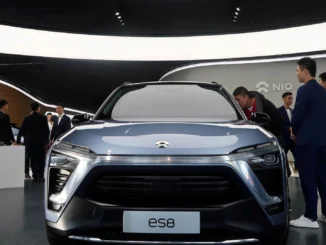
Auto fleets’ shift to electric vehicles (EVs) in a global drive to cut carbon emissions will involve a drawdown on copper that could transform markets, and spur additional supply.
Cars powered by electricity are able to push a greener agenda by eliminating petrol emissions and creating a market for renewable energy. Renewable sources, such as wind and solar, are increasingly replacing coal in power generation. The key commodity for EVs will be copper. For that the world is currently looking at developing new projects.
According to the IEA, copper will remain the most broadly used metal in renewable energy technologies. For instance, a battery EV uses 83kg of copper, compared with the 23kg of copper in an internal combustion engine vehicle. Additionally, batteries and chargers require a lot of copper, while renewables, such as wind and solar power generation, require tonnes of copper.
The world’s two largest economies are headed along this (copper-based) greener path. China’s will continue to grow amid a pledge to shift to greener practices. US President Joe Biden’s infrastructure plans and schemes to cut emissions are already bringing batteries to the forefront.
Goldman Sachs predicts that by 2030, copper demand will grow nearly 600% to 5.4mn tonnes. In North America, the EV market will have a value of $2.7bn by 2021 and $18.6bn by 2030. And by 2040, passenger EVs alone will consume more than 3.7mn tonnes of copper annually.
According to the US Geological Survey (USGS), in 2019 global copper reserves were estimated at 830mn tonnes, with annual demand totalling 28mn tonnes. Additionally, discovered and undiscovered deposits amounted to over 5bn tonnes.
At the same time, of the 224 copper deposits that were found between 1990 and 2019, only 16 were discovered in the past 10 years, meaning that discovering and developing new mines should be a critical priority to meet the growing demand for the green energy transition.
Growing demand and largely stagnant output have turned investors’ attention to projects that seemed very complex in realisation in the near past. One recent example is the development of the Udokan deposit located in Russia’s Far East, where low temperatures are accompanied by very long distances that require very serious investment in infrastructure. But the deposit has reserves of over 26mn tonnes and is considered the largest untapped copper deposit in Russia and the third-largest in the world. The project, owned by Russian billionaire Alisher Usmanov, is expected to go operational next year.
Another example is China’s Molybdenum, which announced plans to invest $2.51bn to double copper and cobalt production at Tenke Fungurume mine in the Democratic Republic of Congo (DRC). The project should be completed in 2023. It includes building three ore production lines that would increase the average annual copper output at the mine by 200,000 tonnes.
There are plenty of other examples in the pipeline as well.
Increased investments going into copper mining will likely emerge as a response to price rises as higher demand kicks in. Copper is a necessary companion to delivering batteries that will lower emissions in EVs and transport and elsewhere globally. The supply of the metal will follow suit with growth.
This article first appeared in New Economy Observer (NEO), a digital publication covering the intersection between finance and social responsibility, with a special focus on emerging markets. It offers news and analysis on major issues shaping the new global economy, including climate change and renewable energy, sustainable development, e-commerce and tech innovation, and the future of work.



